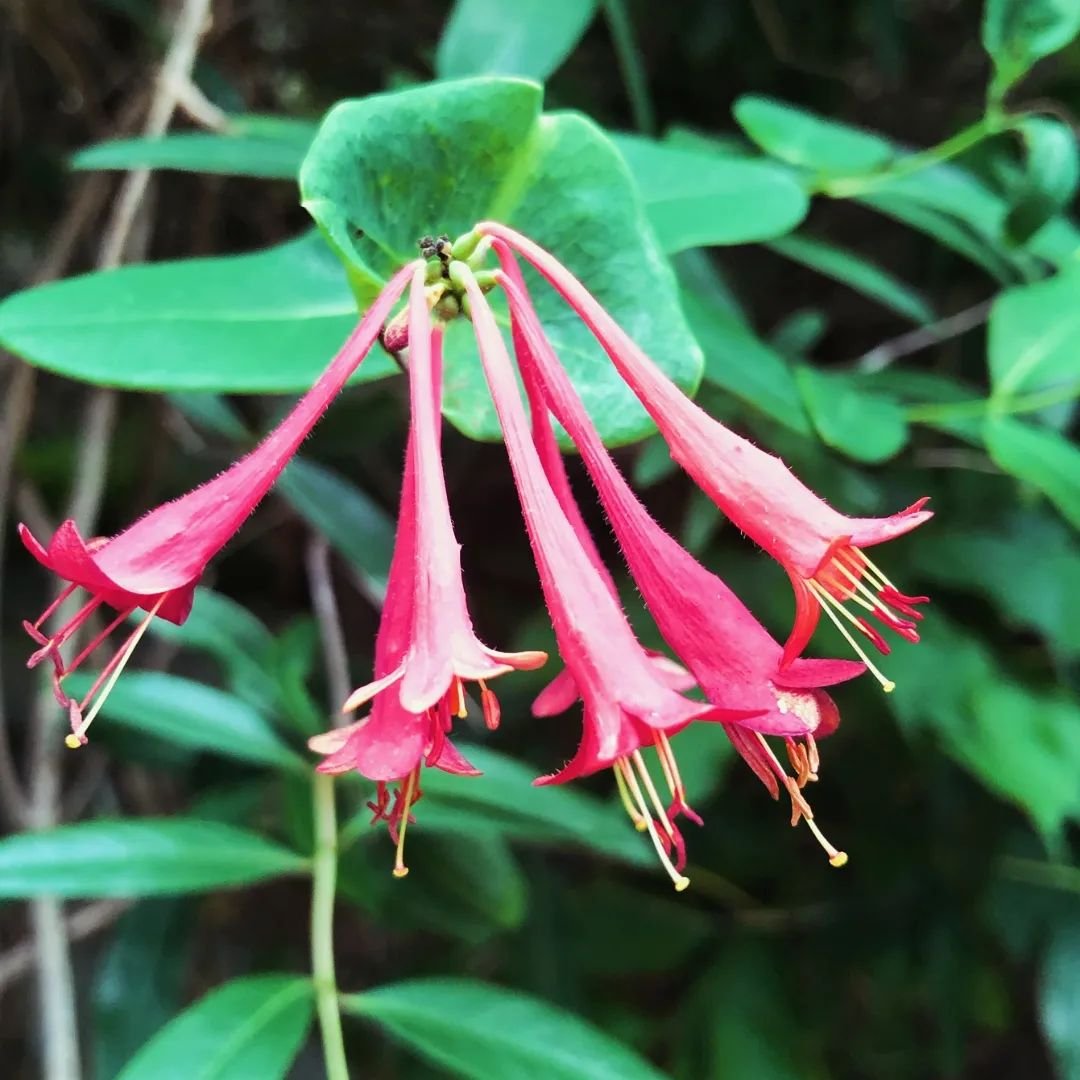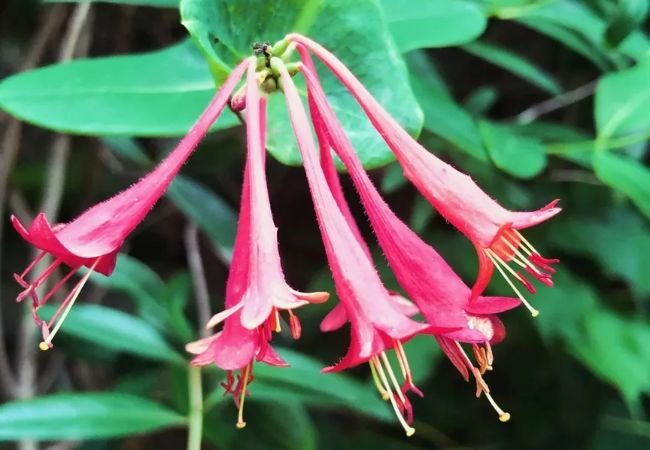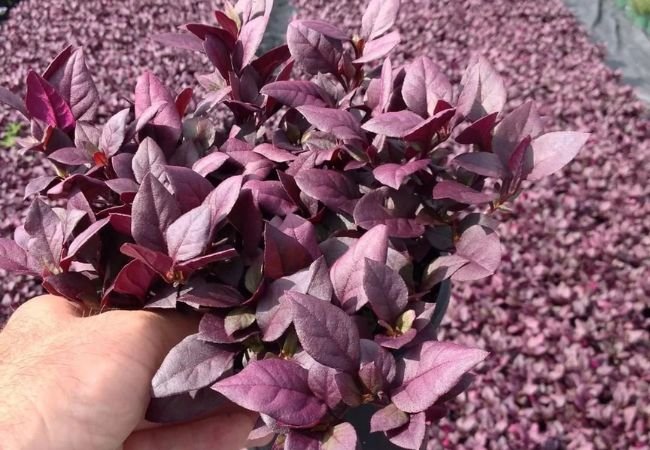Discover how to grow and care for purple honeysuckle, a stunning climbing plant with vibrant blooms. Get tips on planting, maintenance and using this beauty to enhance your garden.
Are you looking for a way to add color, fragrance, and vertical interest to your garden? Look no further than the purple honeysuckle! This stunning climbing plant, with its vibrant purple blooms and sweet fragrance, can transform any outdoor space into a lush, romantic retreat. In this guide, we’ll explore everything you need to know about growing and caring for purple honeysuckle, from planting to maintenance and beyond.
Here is a chart with detailed information on Honeysuckle plants:
| Category | Information |
|---|---|
| Botanical Name | Lonicera spp. |
| Common Name | Honeysuckle |
| Plant Type | Deciduous or Evergreen Shrub/Vine (Depending on Species) |
| Hardiness Zone | 4-9 (Varies by Species) |
| Sun Exposure | Full Sun to Partial Shade |
| Soil Type | Well-drained, Adaptable to Various Soils |
| Watering | Moderate, Drought Tolerant Once Established |
| Growth Habit | Climbing, Twining, or Shrubby |
| Height/Spread | 10-20 feet tall / 6-10 feet wide (Vining Types); 3-10 feet tall / 3-6 feet wide (Shrub Types) |
| Special Features | Fragrant Flowers, Attracts Pollinators (Bees, Hummingbirds, Butterflies), Some Species are Invasive, Blooms in Late Spring to Summer |
What is Purple Honeysuckle?

Purple honeysuckle, scientifically known as Lonicera periclymenum ‘Serotina’, is a cultivar of the common honeysuckle.
It’s prized for its:
- Beautiful purple-pink flowers that fade to creamy yellow
- Sweet, intense fragrance, especially in the evening
- Ability to attract pollinators like bees and butterflies
- Vigorous climbing habit, perfect for covering walls, fences and trellises
How to Grow Purple Honeysuckle
Choosing the Right Location
Purple honeysuckle thrives in:
- Full sun to partial shade
- Well-draining soil
- Areas with good air circulation
Planting Purple Honeysuckle
Follow these steps for successful planting:
- Prepare the soil by adding organic matter like compost
- Dig a hole twice the size of the root ball
- Place the plant in the hole, ensuring it’s at the same depth as it was in its container
- Backfill with soil and water thoroughly
- Provide a support structure like a trellis or fence for climbing
Providing Support
Purple honeysuckle is a vigorous climber.
Here are some support ideas:
- Trellises
- Arbors
- Fences
- Wall-mounted wire systems
Caring for Purple Honeysuckle
Watering
- Water deeply and regularly during the first growing season
- Once established, water during dry spells
- Avoid overhead watering to prevent fungal diseases
Fertilizing
- Apply a balanced, slow-release fertilizer in spring
- Avoid over-fertilizing, which can lead to excessive foliage growth at the expense of flowers
Pruning
Proper pruning is crucial for maintaining the health and shape of your purple honeysuckle:
- Prune in late winter or early spring before new growth begins
- Remove dead, damaged, or diseased branches
- Thin out crowded areas to improve air circulation
- Cut back about one-third of the older stems to encourage new growth
Pest and Disease Management
While generally hardy, purple honeysuckle can face some issues:
- Aphids: Control with insecticidal soap or a strong stream of water
- Powdery mildew: Improve air circulation and avoid overhead watering
- Honeysuckle leaf blight: Remove affected leaves and improve air circulation
Using Purple Honeysuckle in Your Garden
Purple honeysuckle is versatile and can be used in various ways:
- Vertical accent: Train it to climb walls, fences, or pergolas
- Privacy screen: Use it to create a living fence or screen
- Fragrant entryway: Plant near doorways or windows to enjoy its sweet scent
- Wildlife attraction: Use it to draw pollinators and birds to your garden
- Companion planting: Pair with clematis or roses for a stunning display
Tips for Success with Purple Honeysuckle
- Choose the right variety: Make sure you’re getting a non-invasive cultivar suitable for your region
- Provide adequate support: Ensure your support structure is sturdy enough to handle the plant’s growth
- Regular maintenance: Stay on top of watering, pruning, and pest management for the best results
- Be patient: It may take a couple of years for your purple honeysuckle to become fully established and bloom profusely
Common Questions About Purple Honeysuckle
1. How fast does purple honeysuckle grow?
Purple honeysuckle is a relatively fast grower, capable of reaching 10-20 feet in height within a few years.
2. Is purple honeysuckle invasive?
Some honeysuckle species can be invasive, but the purple honeysuckle (Lonicera periclymenum ‘Serotina’) is generally not considered invasive in most regions.
3. Can I grow purple honeysuckle in a container?
Yes, you can grow purple honeysuckle in a large container with proper support and regular care.
4. How long does it take for purple honeysuckle to bloom?
Typically, purple honeysuckle will start blooming in its second or third year after planting.
Purple honeysuckle is a stunning addition to any garden, offering beautiful blooms, sweet fragrance, and vertical interest. With proper care and maintenance, this climbing plant can transform your outdoor space into a lush, colorful paradise. Whether you’re looking to cover a bare wall, create a fragrant entryway, or attract pollinators to your garden, purple honeysuckle is an excellent choice.
Remember to provide adequate support, regular care, and proper pruning to keep your purple honeysuckle healthy and blooming year after year. With a little patience and attention, you’ll be rewarded with a spectacular display of purple-pink flowers and the sweet scent of summer.
Learn more about companion plants for honeysuckle
Discover other fragrant climbing plants for your garden
Happy gardening, and enjoy the beauty of your purple honeysuckle!
For more gardening tips and plant care guides, visit usagardenhub.com.







One comment on “Purple Honeysuckle : Growing and Caring for This Beautiful Climbing Plant”